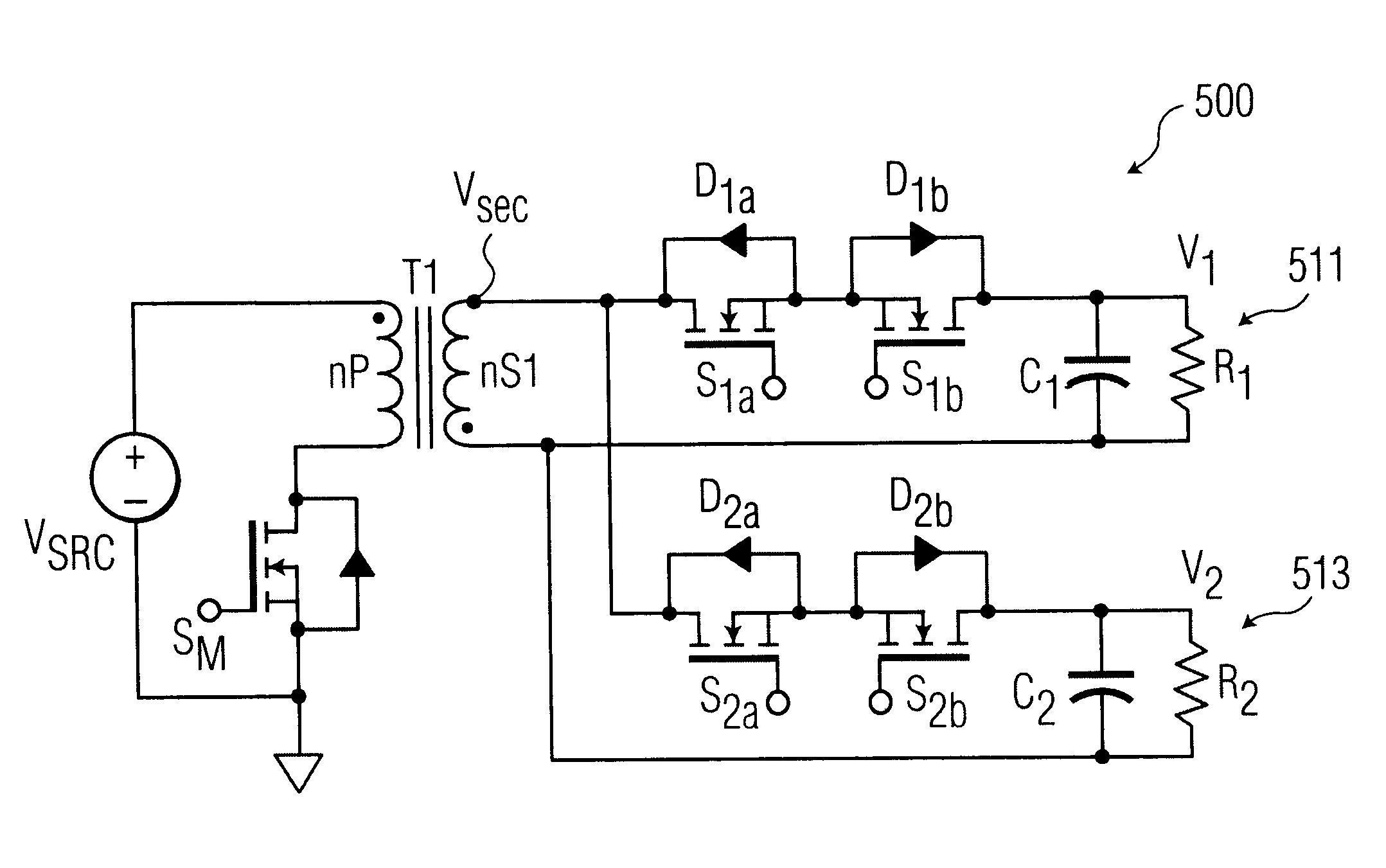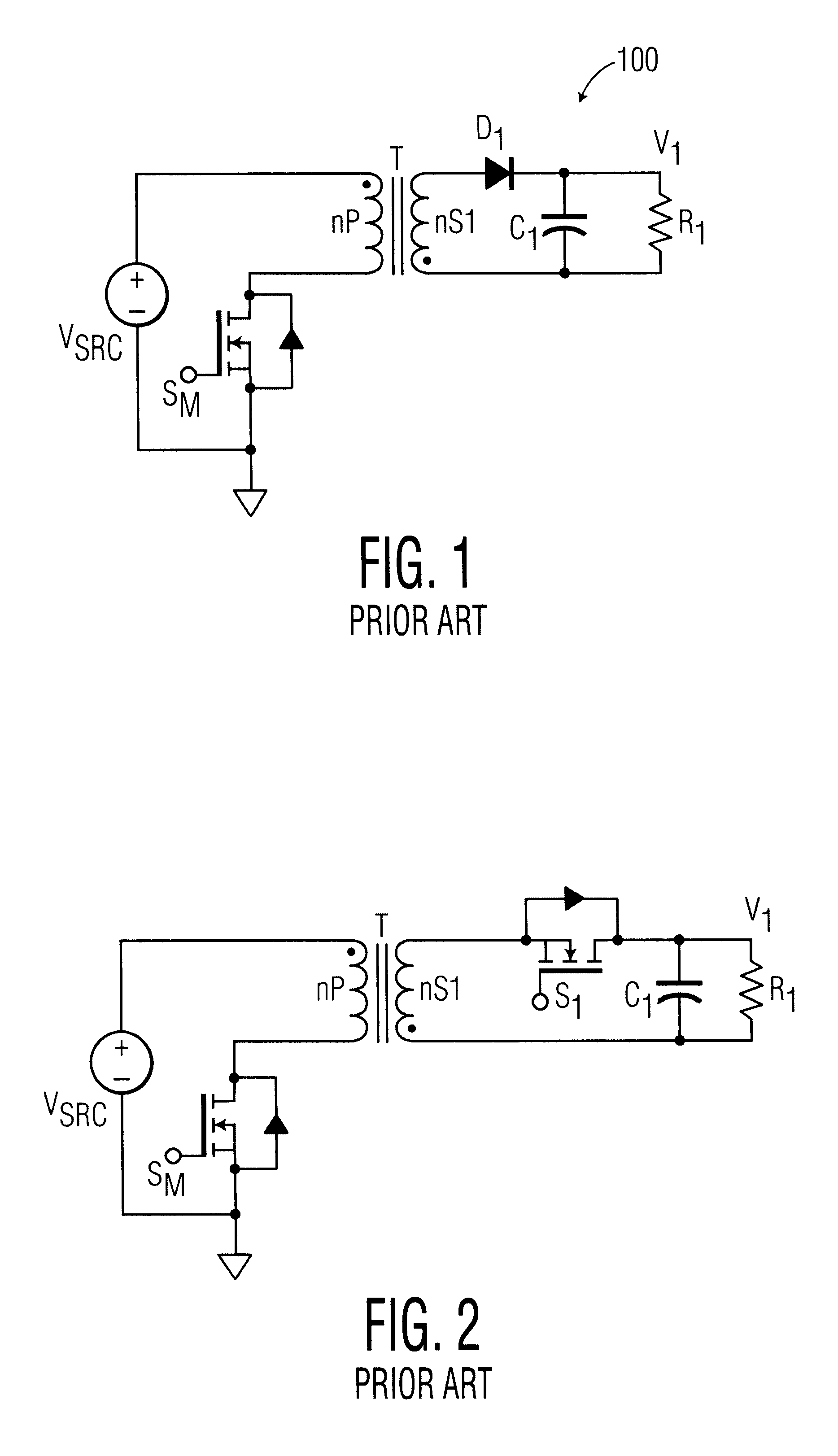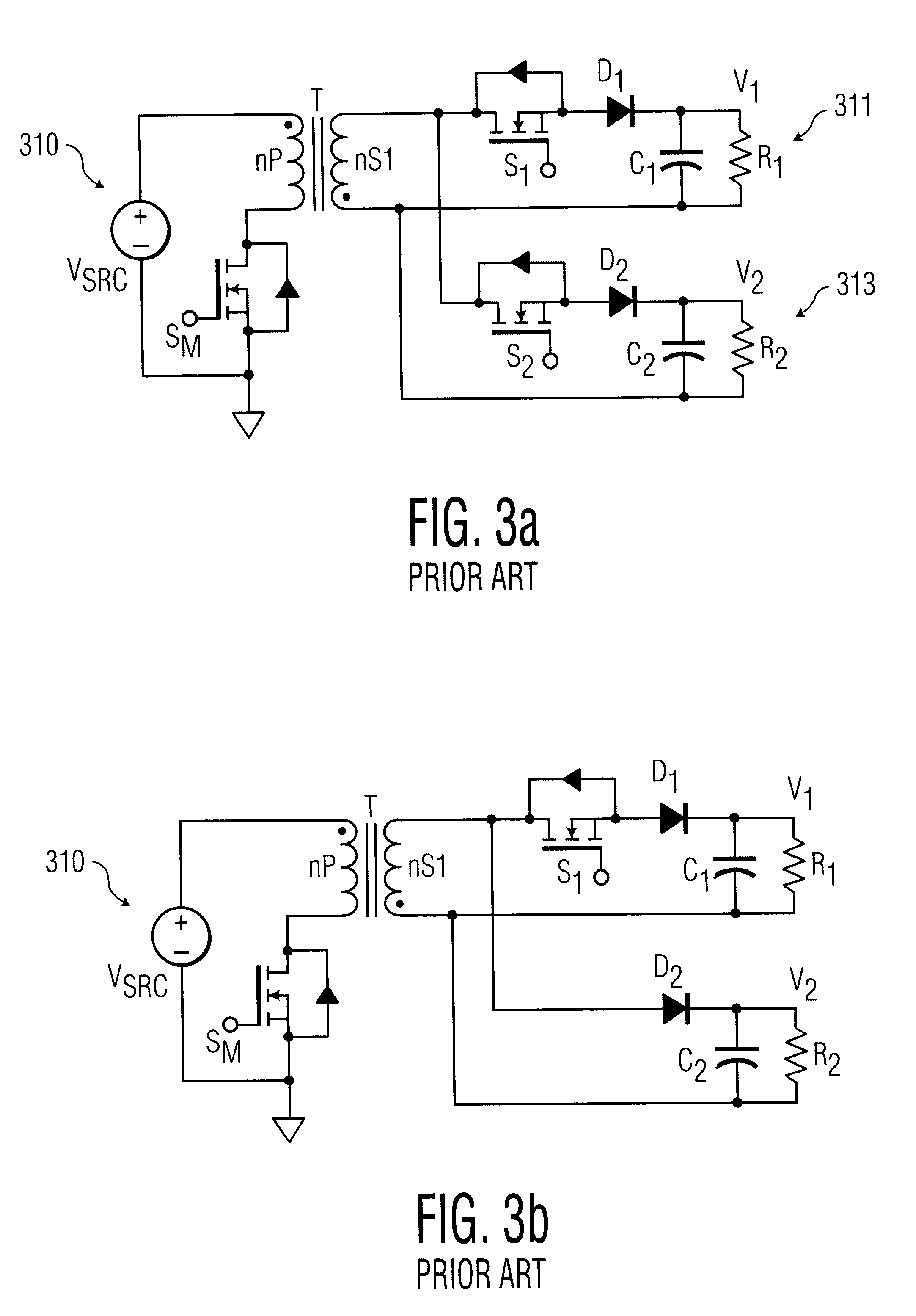Independent regulation of multiple outputs in a soft-switching multiple-output flyback converter
a flyback converter and multiple output technology, applied in the field of dctodc converters, can solve the problems of high bandwidth feedback loop, unstable operation of the flyback converter 100, and high frequency feedback loop
- Summary
- Abstract
- Description
- Claims
- Application Information
AI Technical Summary
Benefits of technology
Problems solved by technology
Method used
Image
Examples
second example
As an example of the ease with which the cycling order can be modified or changed, the present example illustrates what is required to reverse the cycling order of the previous example. Namely, cycling output circuit 513 first followed by output circuit 511. This is achieved as follows.
Prior art output circuit 411 is emulated by output circuit 513 by maintaining switch S.sub.2b of output circuit 513 to be permanently `off`. Prior art output circuit 413 is emulated by output circuit 511 by maintaining switch S.sub.1a of output circuit 511 to be permanently `on`.
SOFT-SWITCHING
Another feature of the present invention is that simultaneous soft-switching of the primary and secondary side switches is maintained.
The secondary switches illustrated in FIG. 5 are preferably implemented as NMOS switches. These switches have two conduction paths, one is the main channel, which is controlled by the gate voltage. When the gate voltage is `on` (i.e., 12V or so with respect to the source) the chann...
second embodiment
FIG. 8 is a schematic diagram of a second illustrative embodiment of a soft-switching flyback converter circuit 800 of the present invention. The present embodiment illustrates a circuit which illustrates how the inventive circuit 800 can be combined with a portion (i.e., one output) of a conventional circuit of the prior art (i.e., FIG. 4). In particular, the inventive circuit 800 is shown to include output circuits 811 and 813. Output circuit 805 illustrates an output circuit in accordance with the prior art. Output circuit 805 illustrates a standard output circuit configuration including a single conventional switch S.sub.3.
As previously described with reference to FIG. 4, prior art output circuit 805, by virtue of its conventional configuration, must be the last output to be sequenced or cycled in the cycling order. By contrast, those output circuits associated with the inventive circuit 800 (i.e., 811, 813) can be sequenced or cycled in any order in accordance with the principl...
PUM
 Login to View More
Login to View More Abstract
Description
Claims
Application Information
 Login to View More
Login to View More - R&D
- Intellectual Property
- Life Sciences
- Materials
- Tech Scout
- Unparalleled Data Quality
- Higher Quality Content
- 60% Fewer Hallucinations
Browse by: Latest US Patents, China's latest patents, Technical Efficacy Thesaurus, Application Domain, Technology Topic, Popular Technical Reports.
© 2025 PatSnap. All rights reserved.Legal|Privacy policy|Modern Slavery Act Transparency Statement|Sitemap|About US| Contact US: help@patsnap.com



